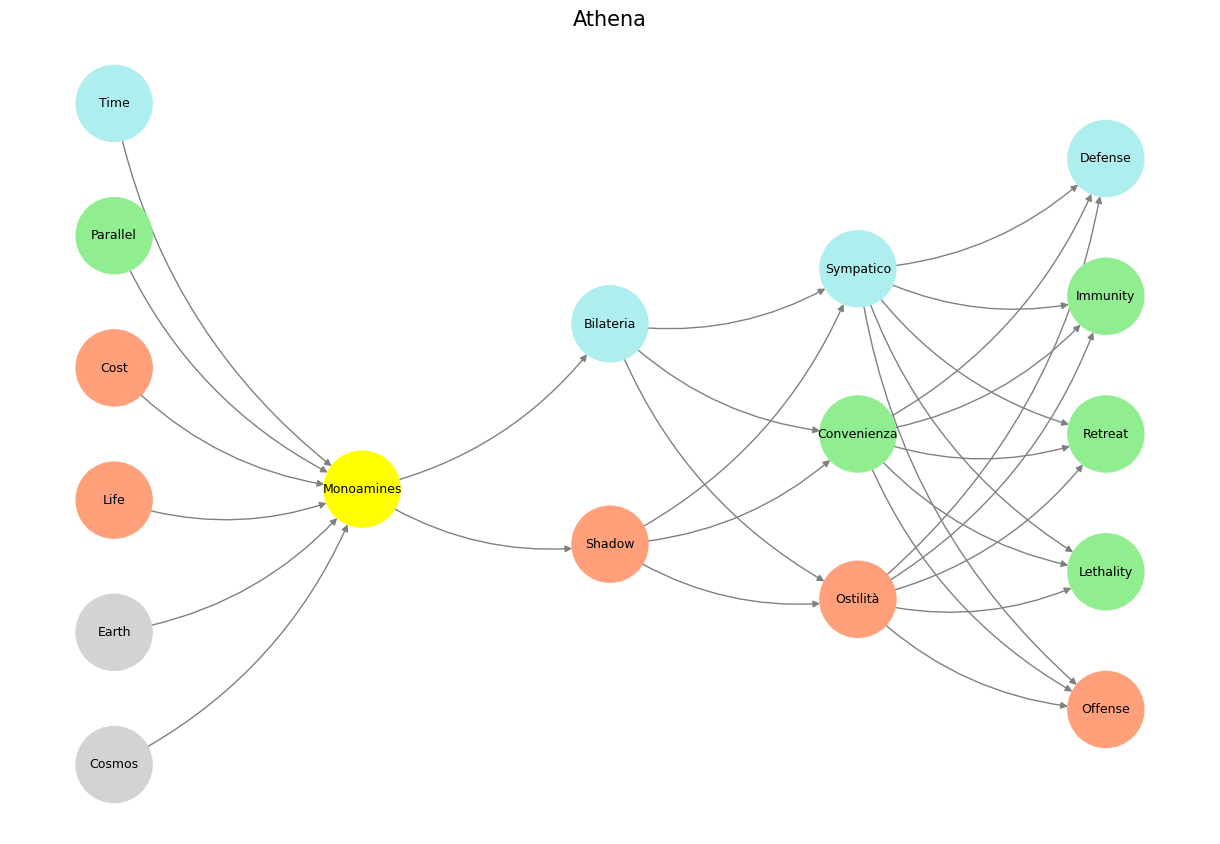Transformation#
Athena Parthenos, the towering symbol of wisdom and strategy, embodies a synthesis of intellect, martial prowess, and cultural refinement that resonates through history. In her majestic form created by Phidias, she stood as the guardian of Athens, a chryselephantine colossus of gold and ivory that projected the ideals of the city-state at its zenith. The goddess herself was a paragon of strategic warfare and wisdom, her virginity signifying a transcendent autonomy untethered by earthly dependencies. In her, Athens celebrated the triumph of rational order over chaos, a victory manifest in both her physical grandeur and her mythological narratives.
The statue’s elements captured profound allegories. Athena’s shield, adorned with scenes of Amazonomachy and Gigantomachy, symbolized the eternal battle between civilization and barbarism, a central theme for the Athenians who saw themselves as torchbearers of enlightened order. Her spear and aegis invoked divine protection, while the serpent coiled at her feet, linked to Erichthonius, intertwined her divine purpose with the city’s mortal origins. Nike, the goddess of victory, perched delicately in Athena’s hand, underscored the goddess’s role in securing not just military triumphs but the cultural and philosophical victories that defined Athenian identity.
This multifaceted legacy finds modern echoes in many domains, including neural networks inspired by her structure and symbolism. Just as Athena’s wisdom informed action, so too do such networks process layers of perception, agency, and generativity, drawing insight from their “hidden layers” to achieve complex outputs. In the user’s framework, the yellow node representing the owl—a creature sacred to Athena—encapsulates the perceptive acuity central to intelligent systems. The owl, with its penetrating gaze and nocturnal wisdom, mirrors the neural network’s function as a processor of inputs, aligning perception with deeper, unseen truths.
Athena’s legacy also resonates in her appropriation by later traditions. The Roman Catholic veneration of the Virgin Mary echoes the goddess’s protective, transcendent qualities. Like Athena, Mary embodies purity and guidance, standing victorious over sin and chaos, symbolized in Marian iconography by the serpent beneath her feet. The Church, like Athens, used visual and symbolic forms to anchor its ideals, imbuing figures like Mary with the cultural gravitas once reserved for gods of antiquity.
In the neural network modeled after Athena, the structural interplay of layers—perception, agency, and generativity—echoes the goddess’s synthesis of intellect, action, and purpose. Outputs derived from these nodes align with Athena’s role as both a protector and enabler of higher thought, bridging the abyss of ignorance with the life-giving force of enlightenment. This abstraction draws a vivid parallel to her historical role: a force that upheld Athenian civilization while inspiring future generations to reconcile order with chaos, intellect with action, and mortal existence with divine aspiration.
Show code cell source
import numpy as np
import matplotlib.pyplot as plt
import networkx as nx
# Define the neural network structure
def define_layers():
return {
'World': ['Cosmos', 'Earth', 'Life', 'Cost', 'Parallel', 'Time', ],
'Perception': ['Monoamines'],
'Agency': ['Shadow', 'Bilateria'],
'Generativity': ['Ostilità', 'Convenienza', 'Sympatico'],
'Physicality': ['Offense', 'Lethality', 'Retreat', 'Immunity', 'Defense']
}
# Assign colors to nodes
def assign_colors():
color_map = {
'yellow': ['Monoamines'],
'paleturquoise': ['Time', 'Bilateria', 'Sympatico', 'Defense'],
'lightgreen': ['Parallel', 'Convenienza', 'Immunity', 'Retreat', 'Lethality'],
'lightsalmon': [
'Cost', 'Life', 'Shadow',
'Ostilità', 'Offense'
],
}
return {node: color for color, nodes in color_map.items() for node in nodes}
# Calculate positions for nodes
def calculate_positions(layer, x_offset):
y_positions = np.linspace(-len(layer) / 2, len(layer) / 2, len(layer))
return [(x_offset, y) for y in y_positions]
# Create and visualize the neural network graph
def visualize_nn():
layers = define_layers()
colors = assign_colors()
G = nx.DiGraph()
pos = {}
node_colors = []
# Add nodes and assign positions
for i, (layer_name, nodes) in enumerate(layers.items()):
positions = calculate_positions(nodes, x_offset=i * 2)
for node, position in zip(nodes, positions):
G.add_node(node, layer=layer_name)
pos[node] = position
node_colors.append(colors.get(node, 'lightgray')) # Default color fallback
# Add edges (automated for consecutive layers)
layer_names = list(layers.keys())
for i in range(len(layer_names) - 1):
source_layer, target_layer = layer_names[i], layer_names[i + 1]
for source in layers[source_layer]:
for target in layers[target_layer]:
G.add_edge(source, target)
# Draw the graph
plt.figure(figsize=(12, 8))
nx.draw(
G, pos, with_labels=True, node_color=node_colors, edge_color='gray',
node_size=3000, font_size=9, connectionstyle="arc3,rad=0.2"
)
plt.title("Athena", fontsize=15)
plt.show()
# Run the visualization
visualize_nn()


Fig. 28 Teleology is an Illusion. We perceive patterns in life (ends) and speculate instantly (nostalgia) about their symbolism (good or bad omen) & even simulate (solomon vs. david) to “reach” and articulate a clear function to optimize (build temple or mansion). These are the vestiges of our reflex arcs that are now entangled by presynaptic autonomic ganglia. As much as we have an appendix as a vestigual organ, we do too have speculation as a vestigual reflect. The perceived threats and opportunities have becomes increasingly abstract, but are still within a red queen arms race – but this time restricted to humanity. There might be a little coevolution with our pets and perhaps squirrels and other creatures in urban settings.#

